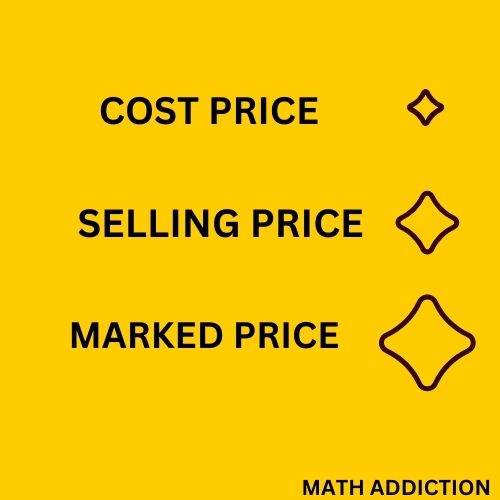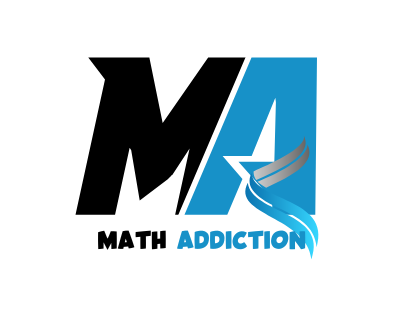Cost price refers to the amount paid to purchase a product, including any additional expenses like taxes or shipping fees. Selling price is the amount for which a product is sold. The marked price is the price at which the product is advertised or displayed for sale.
The difference between the selling price and the cost price represents the profit or loss incurred, while the difference between the marked price and selling price indicates any discounts or negotiations made during the sale. Marked price is typically higher than the selling price, allowing room for discounts or promotions to attract customers is crucial for businesses to effectively manage their pricing strategies and ensure profitability.

Table of Contents
What is Cost Price?
Cost price is the price that has been used up to produce something. In other words, the cost price is the original price paid for an item or service, excluding any additional expenses or markup. It represents the amount of money spent to acquire or produce something before any profit is considered.
Example: Let’s consider baking a cake at home:
If you buy flour, eggs, sugar, and other ingredients from the grocery store for Rs 500 in total, then Rs 500 is the cost price of making the cake.
What is Selling Price?
The selling price is the price at which a product or service is sold to customers. It’s the amount of money that a buyer pays to acquire the item or service. In other words, The selling price is the amount of money a customer pays to purchase a product or service from a seller.
Example: Let’s say you have a bicycle that you want to sell.
You decide to sell it for Rs 1,000. In this case, Rs 1,000 is the selling price of the bicycle. It’s the amount of money that the buyer will pay to acquire the bicycle from you.
What is Marked Price?
The marked price refers to the original price of an item before any discounts and sales. It’s the price that is typically indicated on a label or tag attached to the item for sale. It is also called the list price or the sticker price.
Example:
Imagine you walk into a store and see a television with a price tag showing Rs 10,000. This Rs 10,000 is the marked price of the television, representing the initial selling price set by the store before any discounts or negotiations.
Difference between Cost Price, Selling Price and Marked Price
| Cost Price | Selling Price | Marked Price |
| The cost price is the price at which the seller buys the product or service from the manufacturer or supplier. | The selling is the final price at which the product or service is sold to the customer. | The marked price is the initial price set by the seller for a product or service. |
| It includes the cost of production, transportation, and any other expenses incurred in acquiring the item. | It may be equal to, higher than, or lower than the marked price, depending on various factors such as demand, competition, and negotiation. | It is also known as the list price and is typically higher than the cost price. |
| The seller aims to sell the product at a price higher than the cost price to make a profit. | The selling price can be influenced by discounts, promotions, taxes, and other charges. | The marked price serves as a reference point for negotiations or discounts. |
| The cost price serves as the basis for calculating the profit margin. | It is the amount that the customer pays to acquire the product or service. | It is prominently displayed on the product or in advertisements. |
| It is essential for determining the break-even point and setting pricing strategies. | The selling price reflects the value proposition perceived by the customer. | The seller hopes to receive this amount for the product. |
| Fluctuations in the cost price can impact the profitability of the business. | Sellers may adjust the selling price to meet revenue targets or liquidate excess inventory. | Point of reference for determining the profit margin. |
| Sellers may negotiate with suppliers to lower the cost price and increase profit margins. | Dynamic pricing strategies involve adjusting the selling price based on real-time market conditions and customer behavior. | The marked price may vary based on factors like demand, competition, and perceived value. |
| Cost-effective sourcing and efficient cost management contribute to higher profit margins. | Pricing psychology plays a crucial role in determining the selling price and maximizing revenue. | Sellers may adjust the marked price to attract customers or maintain competitiveness in the market. |
| Cost price analysis helps in optimizing inventory levels and reducing overhead costs. | The selling price contributes to the overall revenue and profitability of the business. | Discounts and promotions are often applied to the marked price to incentivize purchases. |
| Understanding the cost price enables businesses to make informed pricing decisions and stay competitive in the market. | Balancing the selling price with customer value and competitive positioning is essential for long-term business success. | The marked price can influence the perceived value of the product and impact consumer purchasing decisions. |
Recommended Reading
What is Profit and Loss in Math?
Solved Example
Q1 The marked price of an article is Rs 100. After a discount of x %, it is sold for Rs 90. What is the value of x?
Solution: Given, marked price= Rs 100
and, selling price= Rs 90
So, Discount= Marked price – selling price
= 100 – 90
= 10
Therefore, discount= (Discount/Marked price) ×100
= (10/100) × 100
= 10 %
Q2 A cell phone was marked at 20 % above the cost price and a discount of 10 % is given on it’s marked price. What is the profit percentage?
Solution: Given, Let, cost price of the cell phone= Rs 100
So, marked price of the cell phone= 100 × (120/100) = Rs 120
And, selling price of the cell phone= 120 × (90/100) = Rs 108
Therefore, profit = Selling price – cost price
= 108 – 100 = Rs 8
And, profit percentage= (Profit/Cost price) × 100
= (8/100) × 100
= 8 %
FAQs
Q1 What is cost price?
The cost price is the price at which an item was purchased or manufactured.
Q2 What is selling price?
The selling price is the price at which an item is sold to a customer.
Q3 What is profit?
Profit is the financial gain made when the revenue from selling goods or services exceeds the costs, expenses, and taxes associated with producing or providing those goods or services.
Q4 What is loss?
Loss occurs when the expenses incurred in producing or providing goods or services exceed the revenue generated from selling those goods or services, resulting in a negative financial outcome.
Q5 What is the difference between gross profit and net profit?
Gross profit is the difference between total revenue and the cost of goods sold (COGS), while net profit is the amount remaining after subtracting all expenses, including (COGS), operating expenses, taxes, interest, and other deductions, from total revenue.
